A router from the operator? - No thanks!

MT7621A, two cores MIPS 1004Kc / 880MHz. 256MB RAM. Radio unit 2.4GHz and 5GHz on MT7602E and MT7612E.
Everyone already has an opinion on the equipment provided under the brand of the operator. Someone praises, someone scolds, someone prefers to stay away making decisions depending on the situation, without engaging in controversy. A clear answer to the question "What is better?" not.
If you think that we are not faced with the same issue here, then you are deeply mistaken. We must choose from a variety of offers, weed out the junk under the guise of another innovation, think about what customers will like and at the same time provide the income necessary for further development.
Each update of the default router starts with the thought: “Well, now we’ll make the perfect product!” And then the rake begins. About those on which we went, I will tell.
Technology, in theory, allows you to immediately and in a crowd close all Wishlist. The truth then it turns out that the world is not perfect, the sky is not so blue, and the rake can hide in the grass.
In the process of developing branded subscriber equipment, we have collected a huge amount of exp. And the expa got us bumps. But still, we go into each new project with the thought: “Well, here it is, here it is, at last!”.
Do you have an ancient RJ-45 port?
As soon as broadband Internet access began to spread actively throughout the country, it began to be used not for scientific tasks, but for some reason for entertainment. In our case, it all started with one ethernet cable, VPN, and a large computer crashing into a hard drive. It seemed that this would be enough.
Then there was a boom in the spread of Wi-Fi networks, or rather gadgets with support for this nice technology. Their number grew exponentially - smartphones, tablets, televisions, set-top boxes and others, everyone wants access to the Internet. Even a kettle, but you just don’t have to let it in, it only sends spam. And the ethernet cable in the apartment is one. I still remember the tragedy of one of the subscribers who appealed in support of the fact that the first iPhone does not have an RJ-45 port at all.
Then this port began to be thrown out of laptops, right away with the CD-ROM. Naturally, the subscriber wanted Wi-Fi. The chain needed a Wi-Fi router. Naturally, the repaired geeks had their own way, but Uncle Vasya, who wants to call relatives in Perm on Skype, watch football and generally various films, did not want to hammer his head with equipment. That's something like this, we began to provide our subscribers, in addition to wires to the apartment, also routers.
I repeat, the Wi-Fi router was first a geek’s toy, then it was a cheap and convenient way to give Wi-Fi to a subscriber without a technical background, and only then - a really unique offer.
About a rake
Back in the days of Corbina, we started selling the Zyxel P-330W-EE router: this was our first experience. Many of you, probably, remember that this miracle device was famous for its unprecedented stability, which resulted in pleasant evenings of communication with technical support. And pleased us almost as much as you. But these were harsh years, and we gave the Internet as best we could.
Next was the Asus 520 series and the Dlink 615/320. Then we did not think about the development of our equipment, and business plans of this kind were not taken seriously. We are a provider, not a factory. They took what is on the market, chose, transferred it to our subscribers. Basically, for those who had a laptop and a stationary PC, then there were no tablets at all, and Wi-Fi phones were not very requested.
By the time Wi-Fi became widespread, something had to change in this approach, and we began to think about providing a device that was already optimized for the network. And at least with a controlled filling.
As in any large company, we also have a bunch of procedures related to the procurement and selection of suppliers. You can’t just come to the leadership and say “This router is better than others”, you need to explain why it is better (there are no problems with this), everything depends on the final purchase price for the company. Of course, I would like an expensive solution, but there is no charity. So, we need to organize a tender. This is the answer to the frequently asked question: “Why aren’t you selling manufacturer X routers?” According to the results of the competitions, we then selected the TRENDnet 432BRP router and branded it, it turned out to be a “Wi-Fi router from Beeline." There were, of course, sores and schools, without this, nowhere, but by its results we realized that this direction can and should be developed. Sooner or later, all providers would come to the point of becoming responsible for client equipment.
According to the results of another tender, we began to provide new routers Beeline D150L and Beeline N150L. These devices were required because Wi-Fi speeds became more and more, and our previous router supported a maximum of 802.11g, and the firmware needed to be optimized for our network more carefully. With these routers we have gained great experience. Beeline D150L (aka D-Link DIR300B1-B5) at first glance was a fairly balanced model, but this is only at first glance. In the process of testing the device there were more and more bugs, critical and not so, as well as frank jambs. Some went to production. In total, approximately 50 firmware releases were released (only a few reached the masses, the rest did not come out of beta), and only then it began to work as it should.
Having gained a lot of experience with devices from the retail market, we decided to bring ODM manufacturers to our competitions for new models of routers. And that's why:
- An ODM manufacturer makes devices to order: you can buy a router from a famous brand, or you can buy a router from a factory that makes a famous brand for this. This allowed to bring down the price enough to put more powerful iron “in the same set”.
- Factories put new technologies into operation faster. We could get everything new six months earlier than it appeared in retail.
We sat with the designers, formulated the exact task - and so the first Beeline Smart Box appeared. At the time of its release, it had really impressive characteristics for its class: a powerful Realtek RTL8197D processor, 64MB of RAM, 16MB flash, support for fast Wi-Fi - 802.11 2x2MIMO, TR-069. This router really supported 100Mbps rates in L2TP. We guessed with technology: only a year and a half after its release, routers built on the same platform began to appear on sale.
The Smart Box had weak points, which over time became more and more noticeable. One of the main problems is the clutter of the 2.4GHz band over Wi-Fi. Plus, we were able to get almost gigabits (physically) and 200-400 Mb / s at a tariff to the apartment (this story) We did not want to continue to make pieces of iron, although powerful, but medium in comparison with the flagships of other manufacturers, so we decided to go for an experiment. We have long had an idea to make a router that would not be inferior to solutions from the upper price range. But for a more affordable price. And so it appeared ...
Smartbox pro
Here is a new piece of iron, which will now be defaulted for DC / DC2, and then for the rest of Russia. First I’ll show, then we’ll analyze it.

The case is black plastic, the top panel is made using a soft-touch coating, under it is hidden an indication of the status of the device (on / off and there is a network connection / no connection). The design is important to the subscriber, we have already found out.
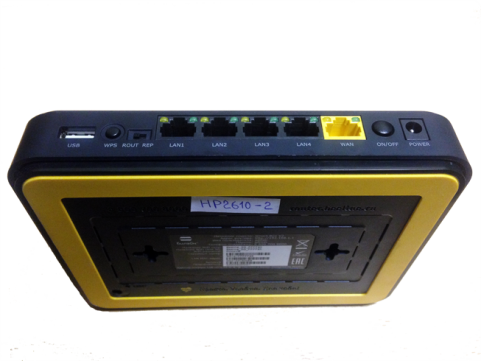
They say that the quality of the laptop assembly can be judged by how the bottom panel is made. We are thinking the same thing about routers:

Size 175x130x30 mm. The rear and side panels have USB 2.0 ports, LAN ports on the switch, and WAN. It supports operation at speeds of 10/100 / 1000Mbps, over each of the ports there are two LEDs that indicate the status of connection and traffic transfer, the power button and the WPS button, the router mode switch <–> Wi-Fi Repeater are located nearby.
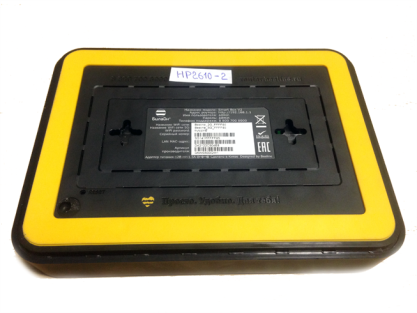
Take a look inside
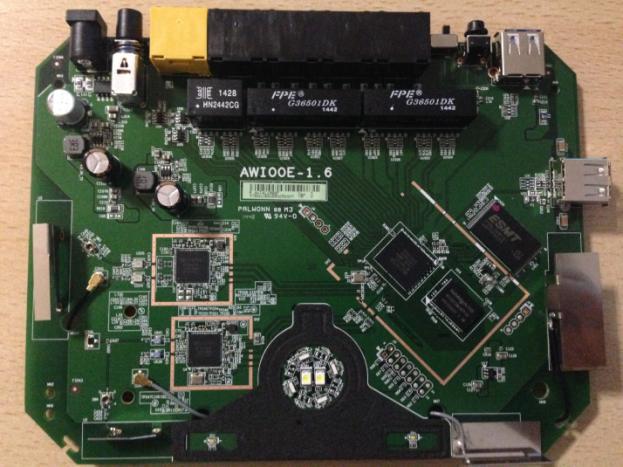
The router is built on MediaTek's SoC - MT7621A, two cores with MIPS 1004Kc architecture, operating at a frequency of 880MHz. The amount of RAM is 256MB, 256MB is also allocated for storing firmware. The radio unit is built with a pair of chipsets MT7602E and MT7612E, the first is responsible for working in the frequency range 2.4GHz, the second at 5GHz. Two internal antennas are used for each of the frequency ranges, with a gain of 3.2dBi for 2.4GHz and 4.5dBi for 5GHz.
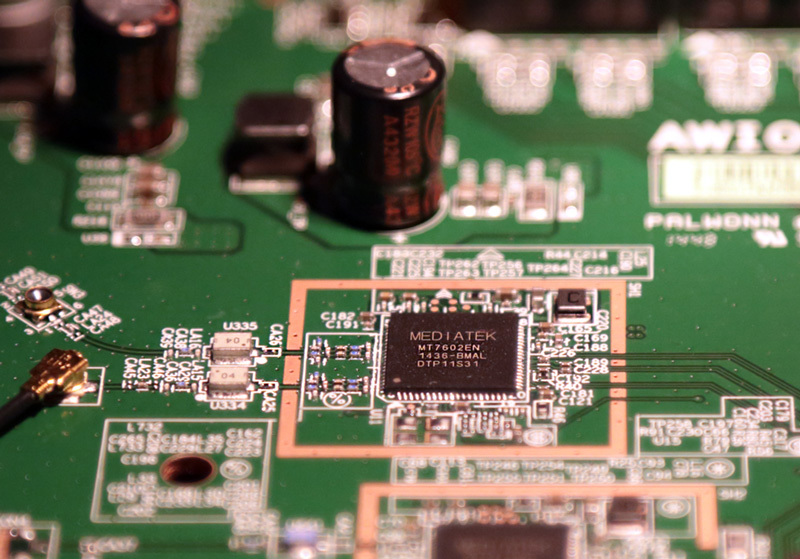
This configuration corresponds to the MIMO 2x2: 2 scheme - up to 300Mbps for the 2.4GHz band in 802.11n mode and 867Mbps for 5GHz in 802.11ac mode, there is still Beamforming support. On paper, the specifications are very impressive, but I prefer to look at the practical side, and so we go to see how fast and stable our new router works.
We are testing.
As usual in field tests, Varvara helps me, having met a new router with a skeptical look, we began to look at how many megabits can be passed through this wonderful box.

Testing one piece of iron is boring and not interesting, it will be much more fun if you immediately compare it with other suitable routers:
• Asus RT-AC68U
• Buffalo WZR-1750HP
• D-Link DIR860L rev. A1
• Totolink A2004NS
• TP-Link Archer C7 v1
• Zyxel Keenetic Ultra
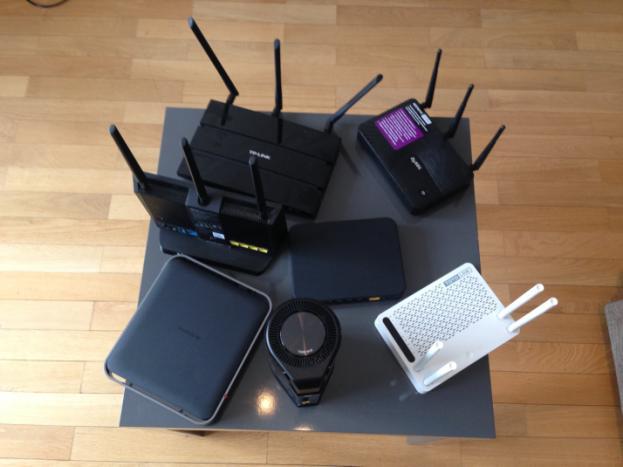
The company has chosen a worthy one, each of the listed models is, in principle, worthy of being installed in the house and pleasing its owner with high-quality communication. I don’t see the point of describing the capabilities of each of the tested, for me this has been done more than a dozen times, so I will give only a comparative table of the main parameters.
Asus RT-AC68U | Buffalo WZR-1750HP | Totolink A2004NS | TP-Link Archer C7 v1 | Zyxel Keenetic Ultra | Smartbox pro | |||
CPU | Broadcom BCM4708A | Broadcom BCM4708A | Broadcom BCM47081A0 | Realtek RTL8197D | Qualcomm QC9558 | Mediatek MT6856 | Mediatek MT7621A | |
RAM | 256MB | 512 MB | 128 MB | 128 MB | 128 MB | 256 MB | 256 MB | |
Flash | 128MB | 128 MB | 128 MB | 32 MB | 8 MB | 16 MB | 256 MB | |
Wifi | 802.11ac 1900Mbps | 802.11ac 1750Mbps | 802.11ac 1200Mbps | 802.11ac 867Mbps | 802.11ac 1750Mbps | 802.11n 450Mbps | 802.11ac 867Mbps | |
USB | 1xUSB2.0 1xUSB3.0 | 1xUSB2.0 1xUSB3.0 | 1xUSB3.0 | 1xUSB2.0 | 2xUSB2.0 | 2xUSB2.0 | 2xUSB2.0 | |
Fw ver. | 3.0.0.4.374_5656 | 2.10 | 1.04 | TOTOLINK-A2004NS-IP04227-8M128M-V1.0.0-B20140923.2001 | 3.15.1 Build 141204 | 2.03.0.c.4-0 | 2.0.12 | |
The router connects to our gigabit link, the maximum speed of which on L2TP is 700Mbps. Opposite the router, there is a computer with an Asus PCE-AC63 Wi-Fi card installed (driver version 6.30.233.228) at 4 meters of direct visibility, Beamforming support is pre-enabled in the Wi-Fi adapter settings (by default, this feature is disabled for some reason), more no manipulations were made. The entire test scenario can be described as “Enabled-Connected-Measured indicator”.
So let's go. Starting in alphabetical order.
Asus RT-AC68U
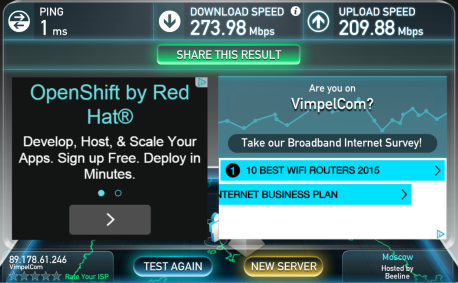
L2TP - connecting to a router via a
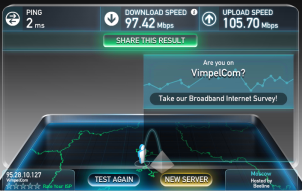
2.4GHz
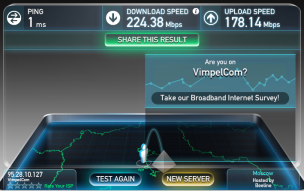
Wi-Fi cable Wi-Fi 5GHz
The results are primarily affected by the lack of optimization for L2TP, 250-280Mbps ceiling.
Buffalo WZR-1750HP
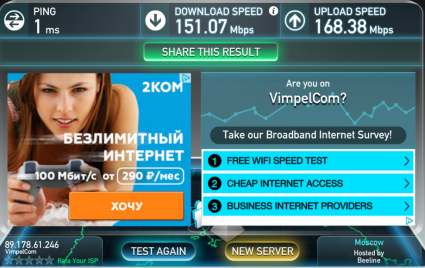
L2TP
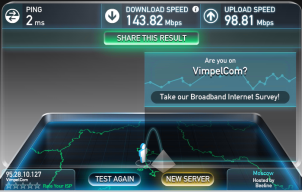
Wi-Fi 2.4 GHz
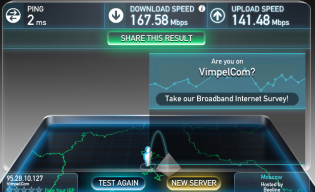
Wi-Fi 5GHz
By design, this router is very powerful, but the problem is the same as the previous participant - there is no optimization.
D-Link DIR860L
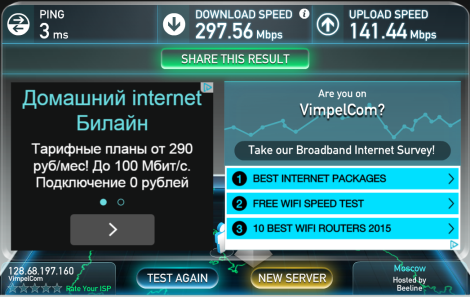
With this router I managed to measure the speed only by cable, during the tests the router constantly broke the L2TP connection. Perhaps the situation will be corrected by other versions of the firmware.
UPD A new version of the firmware quickly came from D-Link, the router began to work stably.
Totolink A2004NS
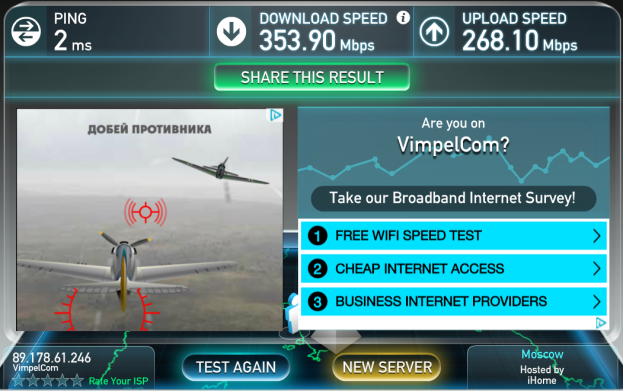
L2TP
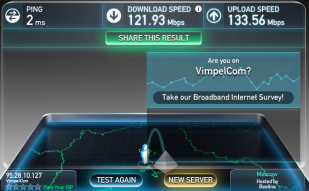
Wi-Fi 2.4GHz
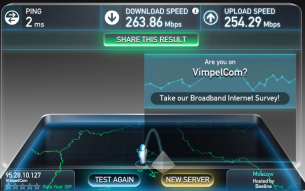
Wi-Fi 5GHz
A good result, especially considering the fact that the router is built on an already obsolete platform that we used in the previous generation of our routers - it is not for nothing that I mention optimization, the results are decent.
TP-Link Archer C7 v.1

L2TP
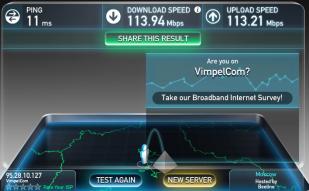
Wi-Fi 2.4GHz
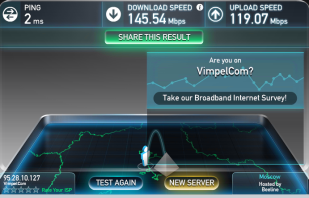
Wi-Fi 5GHz
I think you are starting to guess why such results.
Zyxel Keenetic Ultra

L2TP
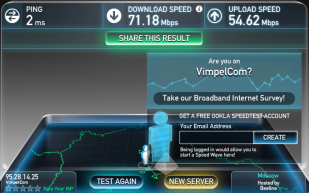
Wi-Fi 2.4GHz
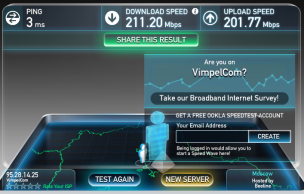
Wi-Fi 5GHz
Already an old man, but demonstrates muscles, optimization + a wide range of functionality. A very, very strong router, albeit without 802.11ac support.
SmartBox Pro

L2TP
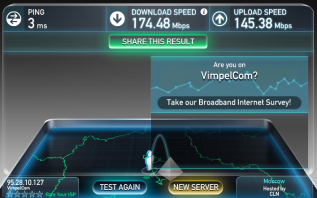
Wi-Fi 2.4GHz
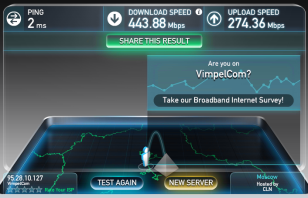
Wi-Fi 5GHz
...
... ...
... ... ... We had no choice but to optimize the operation of our router with our L2TP.
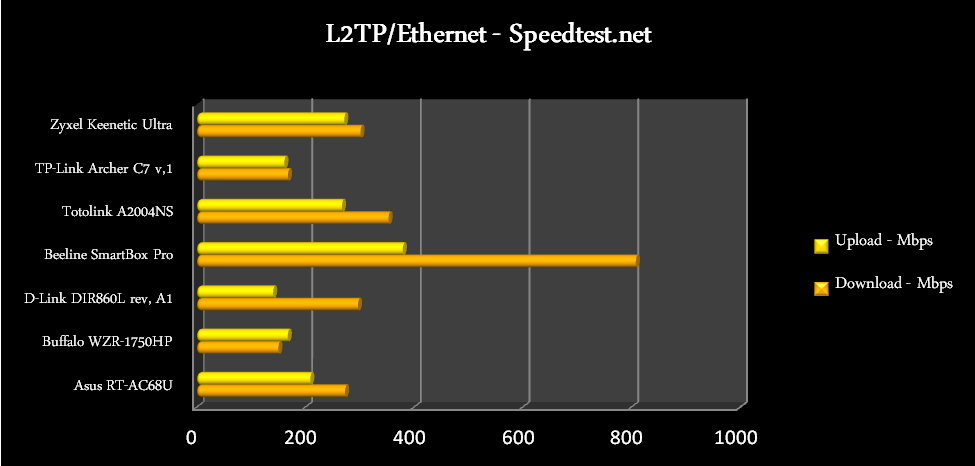
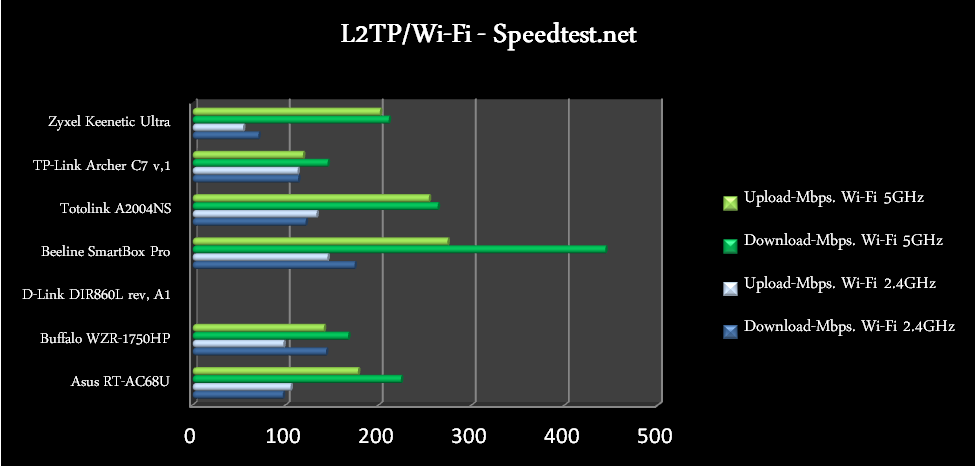
Download | Upload | Download | Upload | Download | Upload | |
Asus RT-AC68U | 273.98 | 209.88 | 97,42 | 105.7 | 224.38 | 178.14 |
Buffalo WZR-1750HP | 151.07 | 168.38 | 143.82 | 98.01 | 167.58 | 141.48 |
297.56 | 141.44 | - | - | - | - | |
Beeline SmartBox Pro | 808.98 | 380.06 | 174.48 | 145.38 | 443,99 | 274.36 |
Totolink A2004NS | 353.9 | 268.1 | 121.93 | 133.56 | 263.86 | 254.29 |
TP-Link Archer C7 v, 1 | 168.76 | 162.01 | 113.94 | 113.21 | 145.54 | 119.07 |
Zyxel Keenetic Ultra | 302.19 | 272.35 | 71.18 | 54.62 | 211.2 | 201.77 |
We continue to test
The results of performance testing in L2TP put very good pieces of iron in an uncomfortable position. Therefore, we decided to compare the performance of wireless modules. Data exchange within the local network is the most common use case in addition to downloading content from the Internet. The IxChariot utility with the installed Endpoints at the measuring points was used as a traffic source. The script High_Performance_Throughput.scr was launched, the total number of pairs is 4, the type of TCP traffic, the test time limit is 1 minute.
As a test, we chose two scenarios: data exchange between a client connected via an Ethernet cable and a client connected via Wi-Fi in two bands (WLAN-LAN).
In the second scenario, we drove traffic between two wireless clients, one of them was a regular IPhone 5, while in order not to narrow the channel between them, the second wireless client was connected to the router via Wi-Fi in the 5GHz band. (WLAN-IPhone).
Both scenarios emulate data transfer in everyday situations - from a computer connected by a cable to a router to a laptop (transfer a movie, photo), from a laptop to a phone (synchronization, backup).
Asus RT-AC68U
Having connected to the router, the Wi-Fi adapter utility reported a fast connection, 1300Mbps. Feel the power of 802.11ac?
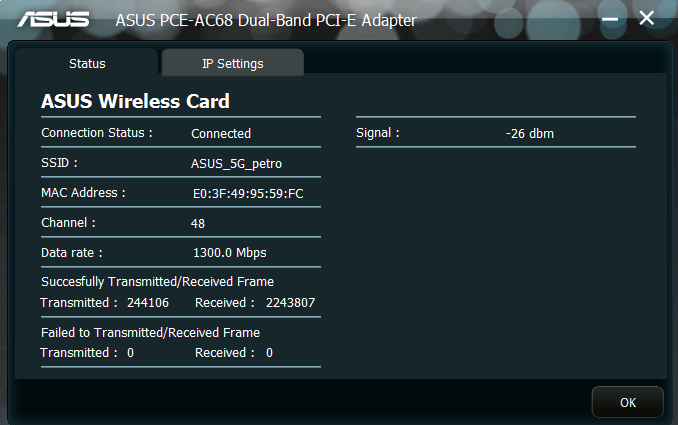
Connecting Wi-Fi 5GHz
How the LAN <-> WLAN traffic chased I


felt, thanks, continue.
5GHz Wi-Fi connection
How WLAN <-> IPhone traffic was chasing


Подключение Wi-Fi 2.4GHz
Как гонялся траффик LAN<->WLAN


Подключение Wi-Fi 2.4GHz
Как гонялся траффик WLAN-IPhone


Buffalo WZR1750HP
Подключение Wi-Fi 5GHz
Как гонялся траффик WLAN<->LAN


Подключение Wi-Fi 5GHz
Как гонялся траффик WLAN<->IPhone


Подключение Wi-Fi 2.4GHz
Как гонялся траффик WLAN<->LAN


Подключение Wi-Fi 2.4GHz
Как гонялся траффик WLAN<->IPhone


Totolink A2004NS
Подключение Wi-Fi 5GHz
Как гонялся траффик WLAN<->LAN


Подключение Wi-Fi 5GHz
Как гонялся траффик WLAN<->IPhone


Подключение Wi-Fi 2.4GHz
Как гонялся траффик WLAN<->LAN


Подключение Wi-Fi 2.4GHz
How WLAN traffic drove <-> IPhone


TP-Link Archer C7 v.1
Wi-Fi connection 5GHz
How WLAN traffic chased <-> LAN


Wi-Fi connection 5GHz
How WLAN traffic chased <-> IPhone


Wi-Fi 2.4GHz traffic
chased How chased WLAN traffic <-> LAN


Wi-Fi connection 2.4GHz
How WLAN traffic <-> IPhone


Zyxel Keenetic Ultra
Wi-Fi connection 5GHz
How WLAN traffic chased <-> LAN


Wi-Fi connection 5GHz
How WLAN traffic chased <-> IPhone


Connection Wi-Fi 2.4GHz
How WLAN traffic chased <-> LAN


Connection Wi-Fi 2.4GHz
How Chased WLAN traffic <-> IPhone


SmartBox Pro
Wi-Fi connection 5GHz
How WLAN traffic chased <-> LAN


Wi-Fi connection 5GHz
How WLAN chased traffic <-> IPhone


Wi-Fi 2.4GHz
chased How WLAN traffic chased <-> LAN


Wi-Fi 2.4GHz
chased How WLAN traffic chased <-> IPhone




WLAN LAN | WLAN IPhone | |||
WLAN <-> WAN 2.4GHz | WLAN <-> LAN 5GHz | WLAN <-> I P hone 2.4GHz | WLAN <-> I P hone 5GHz | |
Asus RT-AC68U | 94 | 553 | 72 | 70 |
Buffalo WZR-1750HP | 152 | 402 | 29th | 68 |
Beeline SmartBox Pro | 141 | 397 | 72 | 119 |
Totolink A2004NS | fifty | 279 | 66 | 66 |
TP-Link Archer C7 v, 1 | 34 | 123 | 44 | 47 |
Zyxel Keenetic Ultra | 140 | 152 | 7 | 51 |
results
The performance results shown by SmartBox Pro are the merit of optimizing the firmware for a particular network and the use of promising hardware. Initially, we wanted to make a router that quickly works on our network and, regardless of the data transmission medium, just as quickly gives content to its owner. How successfully we managed it, you can evaluate for yourself as soon as the router appears on sale.
